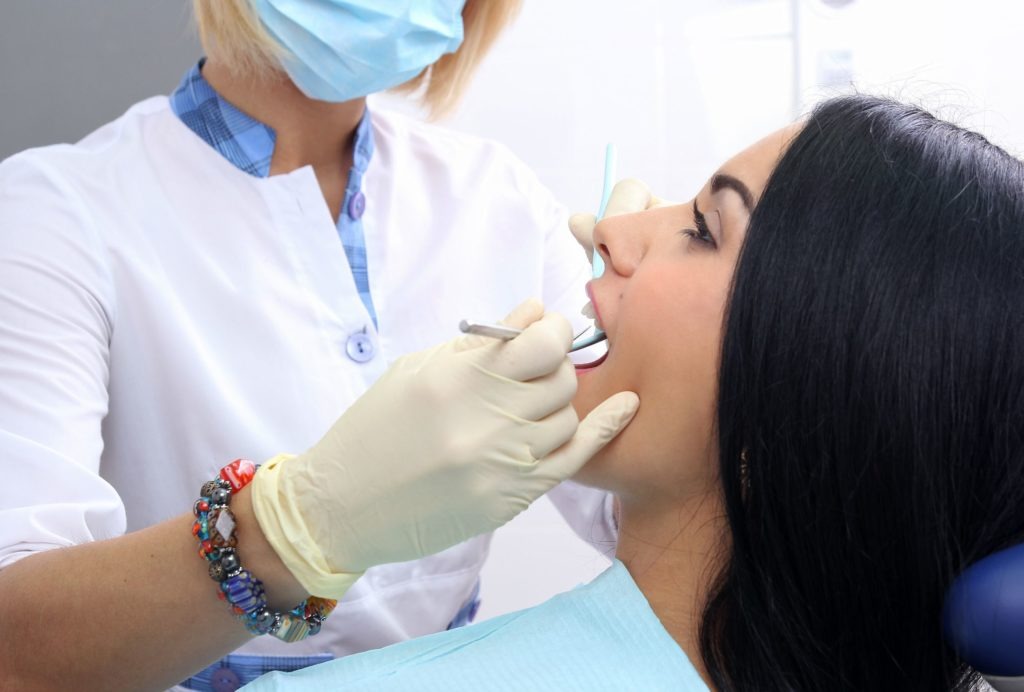When you get down to it, our lives are made up of a whole series of milestones, from our first words, to the first time we ride a bike on our own, to the first time we visit an orthodontist. As exciting as these “firsts” can be, it’s not uncommon to also feel a little nervous them. The unknown can be scary sometimes, and embarking on a new adventure like orthodontic treatment is a big decision!
Here at Szymanowski Orthodontics, we want you to feel confident in your decision to work towards a straighter, healthier smile. Your initial appointment with us is the first step in that journey, and one of the most important you’ll have. This is our opportunity to “wow” you, and we take that seriously! Let’s discuss what you can expect from your free consultation with our practice.
The first step towards the smile you deserve
From the moment you walk in our door, you’ll be welcomed warmly by our team. We’ll give you a brief tour of our office and introduce you to some of our staff, and will also ask you to complete a medical health history form for us. For your convenience, you can actually fill this out at home and bring it to us. Click here to do so!
At this point, we’ll move on to taking a series of digital photographs and x-rays to help Dr. Szymanowski analyze your particular orthodontic needs. A comprehensive oral examination of your mouth will follow, as well as a brief question and answer session with our treatment coordinator. Based on a review of your records, the photos and x-rays taken, and the results of your exam, some or all of the following may be discussed.
- Any oral issues you have that orthodontics can address
- If treatment is needed now, or if it should be delayed until the appropriate growth, tooth eruption, or other factors have occurred
- What treatment options are available to correct the problem, including Invisalign, Damon braces, Damon Clear braces, Incognito, or any other necessary special appliances
- Whether or not any permanent teeth will need to be removed first
- How long we estimate treatment will take
- How much of an investment the treatment process will be
- The payment options we have available or a review of your insurance benefits
Once you’ve decided to pursue treatment with Dr. Szymanowski, we’ll create a customized treatment plan for your case.
Creating a personalized treatment plan that works for you
It’s important to us to analyze each patient’s specific needs in order to produce the best results possible. During your first visit with us, we’ll take the time to walk you through what you can expect at different stages of the treatment process. This is because we want you to fully understand each step in order to have complete confidence in the journey!
Once we’ve decided on a treatment plan that fits your specific case, lifestyle, and goals, we’ll guide you through the total investment needed for your new smile. Because every patient comes with their own unique needs, the costs of treatment will vary on a case-by-case basis. No need to worry, though – this will all be laid out in detail before your treatment ever begins.
We’re dedicated to providing patients with exceptional treatment that fits every budget, and never want finances to stand in the way of healthy smile! That’s why we offer:
- Interest-free financial payment plans throughout the treatment process
- No-down payment, third party financing from CareCredit
- Automatic credit card or bank draft payments through OrthoBanc
- Convenient online credit card payments
Many dental insurance policies will cover a portion of orthodontic treatment. During your initial consultation, we can review your orthodontic coverage and explain your benefits to you. Once treatment begins, we’ll be happy to submit and file your insurance claim for you in order to ensure your benefits are maximized. To make the process go faster, provide your insurance information for our office prior to your initial exam.

Why you should choose Szymanowski Orthodontics
Our team wants to provide you with the best orthodontic care possible, and we’ll always work hard to exceed your expectations! You’ll be fully informed about every step of your treatment plan and progress, and our Sacramento office is a warm and welcoming space. We’ve also invested in state-of-the-art equipment that allows us to create beautifully aligned smiles and improved oral health for patients of all ages in our community. By combining individualized care with cutting-edge technology, we’re able to give you comfortable and efficient treatment in the shortest amount of time possible!
You can count on our skilled staff to make each appointment a positive one, from start to finish. You’ll always be greeted with a smile, and we love to hear all about your day and what’s been happening with you in between visits. Your smile is the first thing most people notice about you, and the thing they’re most likely to remember, which is why we’re all about designing a smile for you that will stand out!
If you’re in Sacramento or any of the surrounding communities, we’d love to meet you. We offer a FREE consultation so you can learn more about how orthodontics could benefit you without committing to anything first. If you want to learn more about what we have to offer your smile, get in touch with us today to schedule your first orthodontic visit! This is the perfect time to take the leap towards the the beautiful smile you’ve always wanted – and the healthy smile you deserve!
 For those people who wear braces, the best type of mouthguard is an orthodontic mouthguard, which is a bit different from regular mouthguards. Made from high-grade silicone, orthodontic mouthguards cushion your lips from bumping against your teeth and braces. This prevents your lip from getting caught in your braces which can be quite painful. It also protects the brackets on your teeth from any potential damage from sports-related impact. Orthodontic mouthguards are typically a bit bigger than regular mouthguards, but they are equally as comfortable to wear.
For those people who wear braces, the best type of mouthguard is an orthodontic mouthguard, which is a bit different from regular mouthguards. Made from high-grade silicone, orthodontic mouthguards cushion your lips from bumping against your teeth and braces. This prevents your lip from getting caught in your braces which can be quite painful. It also protects the brackets on your teeth from any potential damage from sports-related impact. Orthodontic mouthguards are typically a bit bigger than regular mouthguards, but they are equally as comfortable to wear.  If your mouth takes a hit while you are wearing braces, your best response is to
If your mouth takes a hit while you are wearing braces, your best response is to  We generally recommend you start with your orthodontist’s office, but if you feel as though the emergency room would be a better option for you, don’t hesitate to go. Don’t worry that this will impede your treatment time or its overall effectiveness. We can always adjust things when, or if, needed once the emergency situation has been taken care of.
We generally recommend you start with your orthodontist’s office, but if you feel as though the emergency room would be a better option for you, don’t hesitate to go. Don’t worry that this will impede your treatment time or its overall effectiveness. We can always adjust things when, or if, needed once the emergency situation has been taken care of.  If you have a band or bracket that’s broken, but still attached to the wire, don’t connect any elastics to it, and leave it alone until your appointment. If it’s irritating the inside of your mouth, you can cover it with orthodontic wax. If the broken piece has actually come off, put it in a bag and save it for your orthodontist.
If you have a band or bracket that’s broken, but still attached to the wire, don’t connect any elastics to it, and leave it alone until your appointment. If it’s irritating the inside of your mouth, you can cover it with orthodontic wax. If the broken piece has actually come off, put it in a bag and save it for your orthodontist.





